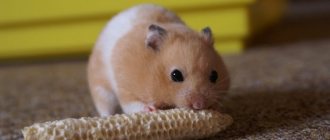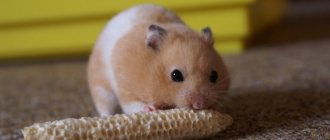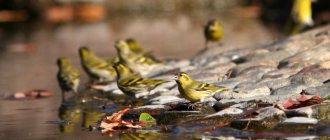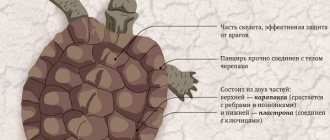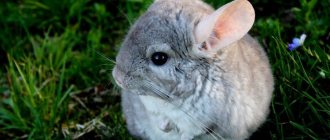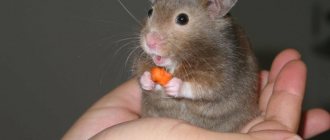Features of wild and domesticated hamsters
Many people are well acquainted with hamsters as pets, cute animals, funny and friendly.
But in nature, these inhabitants are dangerous animals, which even outwardly differ significantly from their tamed counterparts. They pose a threat to both humans and the crops grown in the garden.
Rodent distribution
The largest populations of hamsters live in steppe and forest-steppe zones. In addition, some species live in wet areas along rivers and in mountains at altitudes of up to 3600 m above sea level. Rodents often prefer rice fields, vegetable gardens, orchards and other cultivated areas. Their range covers a large area. Large populations are present in Eastern and Central Europe. Hamsters are also found in Siberia and Asia Minor. Especially many animals live in Iran, Syria, Mongolia, Korea and China. To provide the necessary conditions for the hamster, you need to know where the species was brought from.
Hamsters live in steppe zones.
Features and habitat
In 1930, an animal similar to a hamster . Interest in this animal was based on the search for the “Syrian mouse”, with which children played back in Ancient Assyria. His offspring became the progenitors of the modern large family of hamsters.
The spread of rodents in Central Asia, the steppe regions of Eastern Europe, and then extensive settlement to China and the United States was partly associated with the use of animals as laboratory material and the domestication of unpretentious creatures. In total, there are over 20 species of self-spreading rodents of the main breed of the steppe hamster (common).
Pictured is a steppe hamster
This is a small animal up to 35 cm long, with a dense body, a large head on a short neck. The tail reaches 5 cm. Weight averages up to 600-700 g. Small ears, antennae on the muzzle and black expressive eyes in the form of large beads create a cute appearance for a fluffy bun on short legs with fingers armed with short claws for digging holes and holes.
The animal is protected by sharp and strong teeth, which are renewed throughout its life. A hamster's coat consists of a base of hair and dense undercoat, which provides protection even on sub-zero cold days. The coat color is most often yellow or brown; tricolor spotted, black and white individuals are less common.
There are more than 40 bred varieties with shades of red, orange and gray, spots of different shapes and locations. The distribution area of hamster animals is wide due to their unpretentiousness. It can adapt almost anywhere: mountainous places, steppes, forest belts, suburbs - it hides in burrows from enemies and bad weather.
The main living condition is the availability of food. Animals are very fond of areas along grain fields; they often locate their burrows directly on arable land. Various pesticides and herbicides in land cultivation force animals to leave their homes and move to other places. Human settlements attract people with an abundance of food, so steppe inhabitants often visit barns and courtyard buildings with supplies.
A special feature of hamsters is their amazing thriftiness. The burrows reach gigantic sizes compared to the size of the animals: up to 7 m wide and up to 1.5 m deep. In storage facilities, the weight of accumulated food is hundreds of times greater than the weight of an average-sized hamster.
Special cheek pouches in the form of elastic folds of skin make it possible to carry up to 50 grams of food by increasing the volume several times. Farmers suffer losses from hamster robberies. Entire systems have been developed to counter rodent infestations. They themselves are also the object of hunting in nature for birds of prey and owls, stoats and ferrets.
General appearance
The hamster family includes small, tightly built rodents with short limbs, small ears and short tails. Body length varies from 5 to 34 cm, tail from 0.7 to 10 cm. Females in some species are larger than males. The color of the thick fur on the back ranges from ash or brownish-gray to dark brownish-ochre; on the stomach - black, white or gray. Sometimes there is a black stripe along the back. There are very developed cheek pouches[5].
Hamsters have poor eyesight; they are nearsighted and colorblind[6][7].
Character and lifestyle
By their nature, hamsters are loners, aggressive against anyone who encroaches on their territory. They protect their possessions up to 10-12 hectares in size. The size of the enemy does not matter; there are known cases of rodent attacks on large dogs.
If related rodents run away from meeting a person, steppe hamsters may attack. Rodent bites are painful, can cause infection with many diseases, and leave lacerations.
Ruthlessness manifests itself even towards its own individuals. The weaker ones will not escape alive from their strong and toothy relatives if they consider them an enemy during mating time or simply notice an unwanted guest near their reserves. The activity of the animals manifests itself at twilight. Hamsters are nocturnal animals . During the day they hide in holes, gaining strength for fearless hunting.
Deep dwellings are located 2-2 meters underground. If the soil allows, the hamster will go as deep as possible into the soil. The living chamber is equipped with three exits: two “doors” for ease of movement, and the third leads to a pantry with supplies for the animals’ winter life.
The hamster uses the accumulated food only during hungry, frosty times and at the beginning of spring. In other seasons, food consists of food from the external environment. Above the burrows there are always dug piles of earth, sprinkled with grain husks. If cobwebs have accumulated at the entrance, then the home is abandoned; hamsters keep the houses clean.
Not all hamsters hibernate; some species even turn white so that their forays into the snow cover are unnoticeable. Those who wait out harsh weather in shallow sleep periodically stay awake to refresh themselves with accumulated reserves. When the earth begins to warm up, in February, March or early April, it is time for the final awakening.
But before leaving completely, the hamster will still feast on supplies, gain strength, and then open the entrances and exits of the hole. The males emerge from the burrows first, and the females a little later.
Peaceful relations between them are established only during the marriage period, otherwise they exist on equal terms. Hamsters' ability to swim well is amazing. They inflate their cheek pouches like a life jacket that keeps them afloat.
Notes
- ADW: Cricetinae: INFORMATION
- Fox, Sue. 2006. Hamsters. TFH Publications Inc.
- Barry, Anmarie. 1995. Hamsters as a New Pet. TFH Publications Inc., NJ ISBN 0-86622-610-9.
- Patricia Pope Bartlett.
The Hamster Handbook. - Barron's Educational Series, 2003. - P. 113. - ISBN 978-0-7641-2294-1. - Cheek bags // Encyclopedic Dictionary of Brockhaus and Efron: in 86 volumes (82 volumes and 4 additional). - St. Petersburg, 1890-1907.
- King, LeeAnne Engfer;
photographs by Andy. My pet hamster & gerbils. - Minneapolis: Lerner, 1997. - P. 13. - ISBN 978-0822522614. - Thomas A. Scott.
Concise encyclopedia biology. — Rev. - Berlin: Walter de Gruyter, 1995. - P. 299. - ISBN 978-3110106619. - ↑ 12
Etymological Dictionary of the Russian Language = Russisches etymologisches Wörterbuch: in 4 volumes / author's compilation. M. Vasmer; lane with him. and additional member-corr. USSR Academy of Sciences O. N. Trubachev, ed. and with a preface. prof. B. A. Larina [t. I]. — Ed. 2nd, erased - M.: Progress, 1986-1987. - hamster (English). Online Etymology Dictionary. Access date: July 25, 2010. Archived June 25, 2012.
- Russian titles from the book Complete illustrated encyclopedia. "Mammals" Book. 2 = The New Encyclopedia of Mammals / ed. D. MacDonald. - M.: Omega, 2007. - P. 444. - 3000 copies. — ISBN 978-5-465-01346-8.
- Vietnamese authorities have banned hamsters (unspecified)
. Lenta.ru (March 7, 2008). Access date: August 14, 2010.
Hamster nutrition
The diet of rodents is varied and largely depends on the region where they live. Grain crops will predominate near the fields, and vegetable and fruit food will predominate near human habitation. It is not uncommon for hamsters to attack young chicks if there is no one to protect them.
On the way to vegetable gardens or orchards, animals will not refuse small insects and small animals. The diet is dominated by plant foods: corn grains, potatoes, pea pods, rhizomes of various herbs and small shrubs.
Near human habitation, hamsters eat everything and are an excellent poacher. Residents always try to get rid of such neighbors. Whatever hamsters eat, winter supplies are collected from various grains and plant seeds.
Links
Wiktionary has an entry for " hamster
"
- Animal Diversity Web: Cricetinae
To improve this article it is desirable:
Please, after fixing the problem, remove it from the list of parameters. After eliminating all the shortcomings, this template can be deleted by any participant. |
Original: Original:
Reproduction and lifespan of a hamster
Hamsters reproduce quickly and actively due to the fact that the male has several families. If he is defeated by a strong relative in a mating dispute, then he will always have another female to continue the race.
Offspring are born several times a year, each litter consisting of 5-15 cubs. Having appeared blind and bald, hamsters already have teeth, and on the third day they are covered with fluff. After a week they begin to see. At first they live in the nest under the close supervision of the mother.
The female can even take care of other people's babies. But the children, if they don’t accept the foundling, they can crush him. In nature, animals do not live long, up to 2-3 years. In captivity, with good care, the lifespan of pet hamsters increases to 4-5 years.
It is interesting that small cubs, 1-2 months old, when entering the home world of people, are not aggressive. buy a hamster for a child without fear, but you just need to remember that leaving it quickly can become a psychological trauma.
At the same time, it is useful even for children to distinguish between Norman the hamster from the popular cartoon and a living creature with its own needs and character.
Tame and playful hamsters, such as Djungarian hamsters, will bring joy and excitement to any family. But the little steppe resident requires care and attention to his needs. A hamster can become a favorite of both children and adults.
List of useful products
Pet stores have a wide selection of snacks for hamsters. Manufacturers offer crackers, bars, and biscuits. But veterinarians do not recommend getting carried away with such food. If you want to pamper your pet, it is better to give him regular drying. It is important that it does not contain additives or dyes. It’s better to use healthy foods as a snack or to encourage your pet.
Berries and fruits
What grass should not be given to rabbits, and what can be fed?
Starting from two months, the hamster can already eat small pieces of apple. After some time, the pets are offered grapes and currants. It is allowed to give animals apricots and pears in small quantities.
Note! Bananas are rarely used and should not be a staple of the diet, but rather considered a treat.
Hamsters love dried fruits. It is not forbidden to include raisins, dried apricots, and dried apples in their menu. But it’s better to avoid prunes. You can also feed your rodent banana chips. It is important that all dried foods are sugar-free. Before use, they are usually soaked a little in water.
Allowed berries also include:
- strawberries;
- cherries;
- strawberries;
- raspberries;
- blueberries
Hamster tries strawberries
Animal protein
The menu includes the following products as protein foods:
- Chicken fillet, which must be boiled before feeding your pet. You shouldn’t add salt during cooking, just like other spices.
- Quail eggs.
- Mealworms and earthworms. It is better to purchase them at a pet store.
- Dried insects. Hamsters eat locusts, ants, and grasshoppers. There is no need to catch them in the field, but rather go to the nearest pet store.
Other products
What else can you give hamsters as a useful supplement to their main diet:
- Low-fat kefir, yogurt, cottage cheese. All products must be free of sugar, dyes and various flavoring additives. There is no need to feed them every day; it is enough to do this two, maximum three, times a week. It is recommended to alternate fermented milk products.
- Nuts, excluding almonds. Also, you should not buy cashews, especially for small hamsters. It contains a lot of vegetable fats, which has a detrimental effect on your pet’s digestion. But if the hamster eats special mixtures, then additional nuts are given rarely and in very small quantities. They are usually included in a balanced diet along with grains and flakes.
- Mineral supplements, they not only provide the body with missing elements, but are necessary for grinding teeth. For the same purpose, branches are placed in the pet’s cage, which they happily begin to gnaw. Before giving them to your hamster, it is better to boil them and dry them well.
